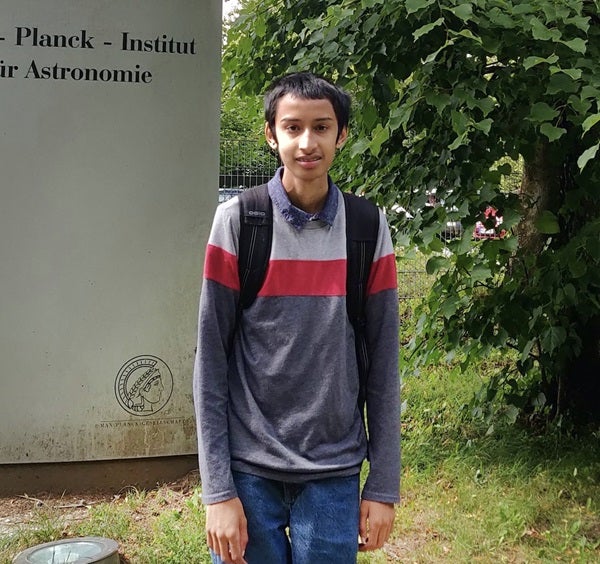After watching his first total lunar eclipse at the age of 8, Vivek Vijayakumar’s fondness for the night sky quickly grew into a love for amateur astronomy and an obsession for the science behind it. He took his first college astronomy course in middle school. Right away, “I began wondering how I could contribute to our understanding of celestial phenomena,” he says.
By the time he began high school in San Marcos, California, Vijayakumar had already authored a number of research papers — including the one he’s most proud of, in which he used data analysis to study the exoplanets that orbit distant stars. He also received an award for a science project studying the expansion of planetary nebulae. Doug Sollosy, founder of the Curiosity Peak Observatory in Julian, California, has been following Vijayakumar’s career ever since. Sollosy was impressed both by the work Vijayakumar was doing and his motivation to teach others about it.
“Besides being a young person who was really passionately engaged in expanding his own work in astrophysics and astronomy, he was also interested in outreach and sharing what he had learned with the public,” says Sollosy. “He would bring his telescope to our events and not just show people the stars; he would take the time to explain what they were seeing.”
Today, as a 19-year-old sophomore at Princeton University, Vijayakumar is driven to expand his affinity for the night sky into a greater understanding of its makeup. He’s part of a team of researchers at the school developing data tools to analyze compact objects like neutron stars, white dwarfs, and black holes. In the future, he’s most excited about diving into spectroscopy, using light to unlock physical properties of stars, such as their chemical makeup, temperature, density, and luminosity.
Additionally, Vijayakumar is interested in the material that lies between the stars: “There’s still so much we don’t know about the composition of the interstellar medium,” he says.
While he’s not certain what his future will hold, he knows that both the skies and academia will be the most prominent parts of it. But regardless of the scientific path he pursues, you can be sure that he’ll be ready to tell us all about it.
Make sure to explore our full list of 25 rising stars in astronomy. Check back each week for a new profile!
To get the latest astronomical news and observing content delivered directly to your door, subscribe to Astronomy magazine today!










